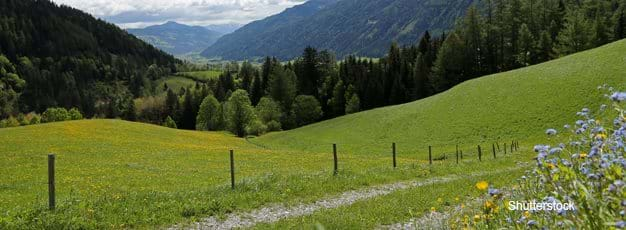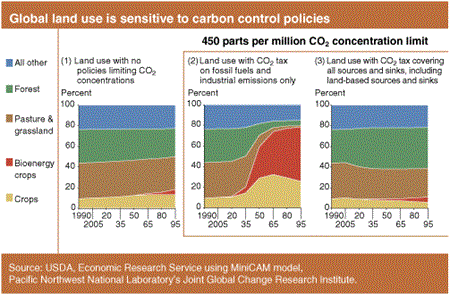Land Use Can Play Critical Role in Controlling Global Warming

It is generally believed that atmospheric greenhouse gases contribute to global warming. Agriculture emits greenhouse gases (for example, methane from livestock and nitrous oxide from fertilizer) and releases soil carbon through tillage and land use changes. But the agricultural and forestry sectors can also remove carbon dioxide (CO2) from the atmosphere and store it in soils and plant matter.
The quantity of carbon dioxide emitted to the atmosphere is critical because a portion of CO2 emissions remains in the atmosphere for more than 1,000 years. Efforts to limit atmospheric CO2 concentrations have traditionally focused on industries that refine or burn fossil fuels. But recent economic research suggests that limiting CO2 concentrations to low levels will require strategies that manage carbon emissions/sequestration from land use change as well as from the combustion of fossil fuels.
A recent study by researchers at the Pacific Northwest National Laboratory and ERS analyzed three hypothetical approaches for dealing with CO2 concentrations through 2095. Option 1 simulates land use if there were no policies limiting CO2 concentrations. Land use changes over time as population, agricultural productivity, and income change, but not in response to CO2 limitations. The other two options involve imposing taxes on CO2 emissions to limit atmospheric concentrations.
Under option 2, only fossil fuel emissions of CO2 would be taxed, with emissions from land use change ignored. The third option would tax all sources of CO2, including emissions resulting from changes in land use and land management. The results compare land uses (such as using land to grow crops, livestock, and trees) and the cost of limiting CO2 concentrations across the three options and for varying CO2 concentration targets.
Overall, land use change (and costs) are reduced when all sources and sinks of CO2 are considered, including agricultural soils and forests (option 3). Ignoring the value of carbon in forests and farmland (option 2) leads to pronounced changes in land use as bioenergy is substituted for fossil fuels, and as cultivation expands to less productive soils.
Under all three policy alternatives, future improvements in crop productivity affect land use change and the cost of limiting CO2 concentrations. Technological advances in growing crops can reduce CO2 emissions as less cropland is needed to produce the same amount of food and bioenergy. Improved crop productivity has the potential to reduce CO2 emissions on a scale similar to capturing and storing CO2 emissions from electricity-generating plants.
Implications of Limiting CO2 Concentrations for Land Use and Energy, Science, Vol. 324, pp. 1183-1186, May 2009


